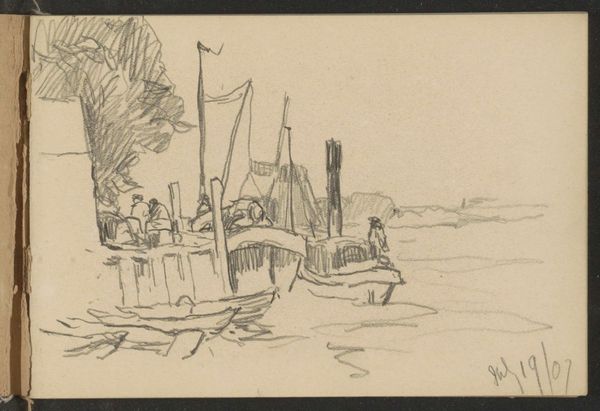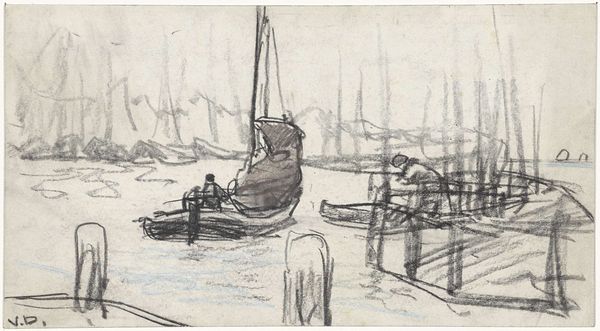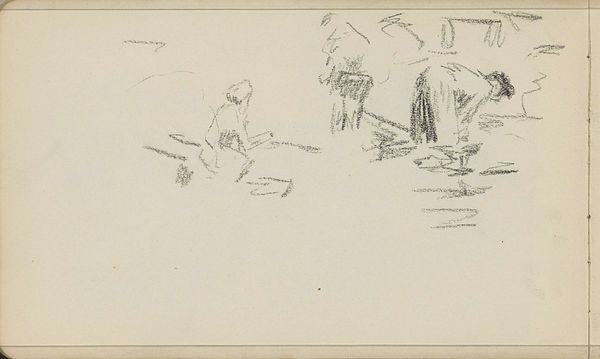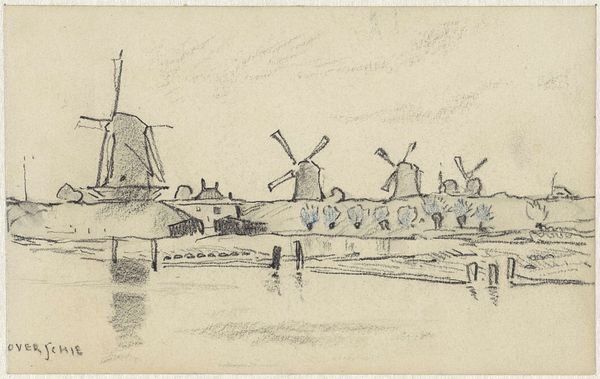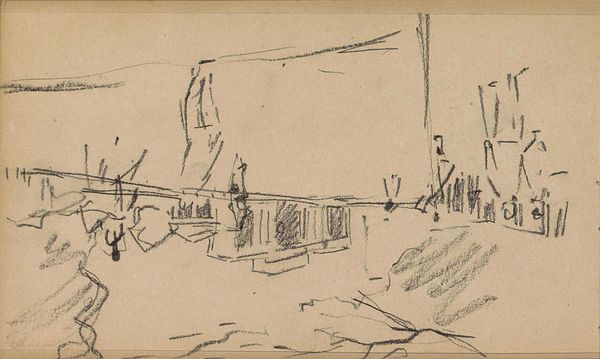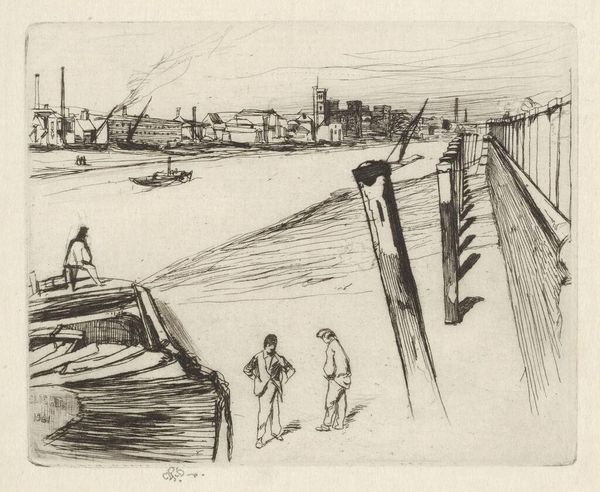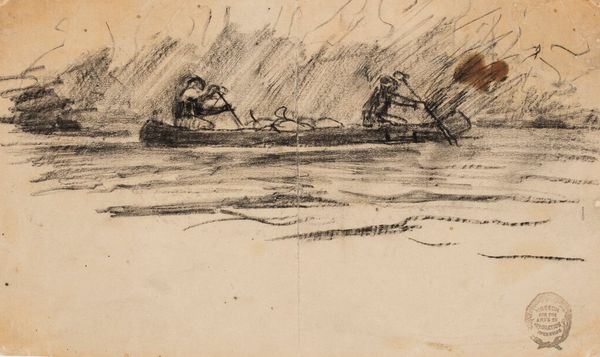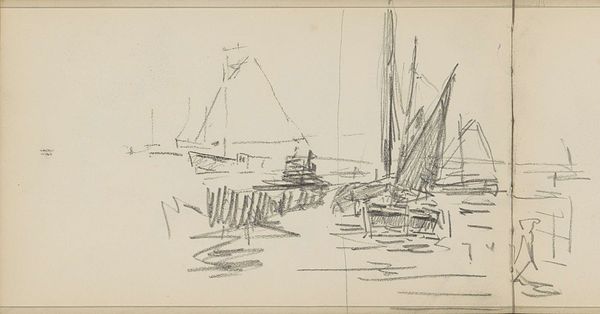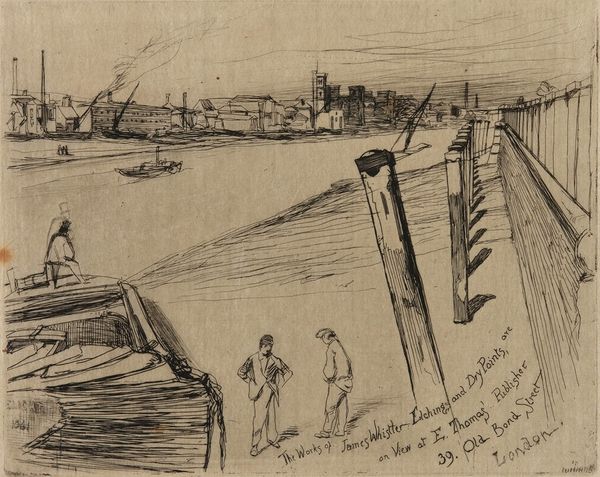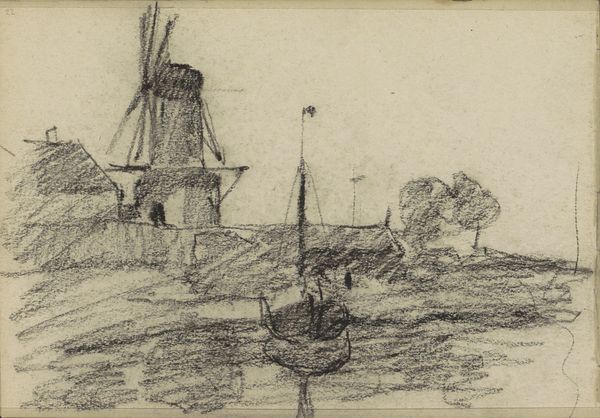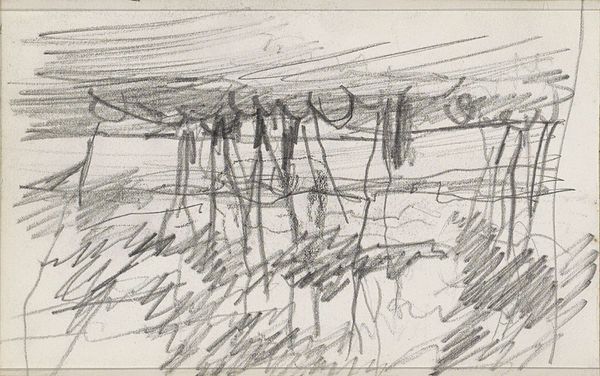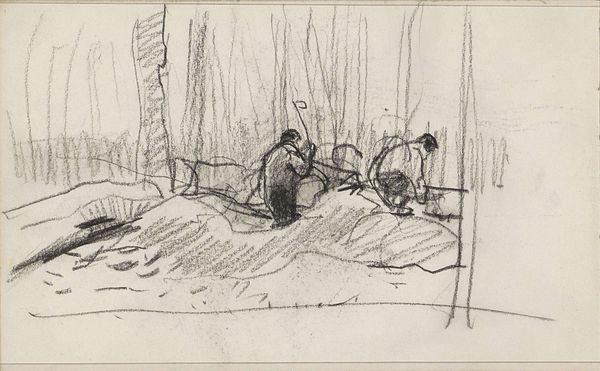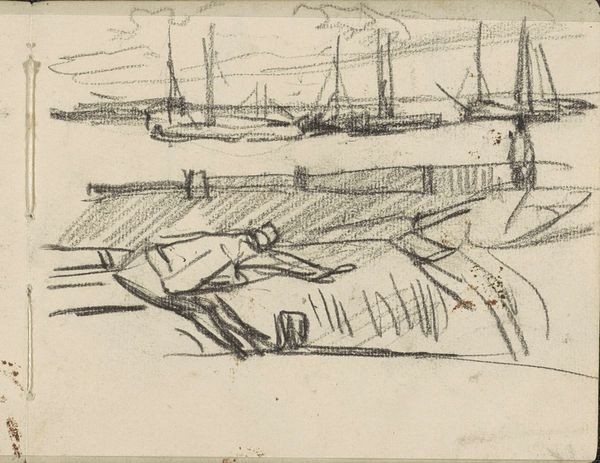
Schafttijd in de bouwput aan de Van Diemenstraat in Amsterdam 1897
0:00
0:00
Dimensions: height 131 mm, width 159 mm
Copyright: Rijks Museum: Open Domain
Editor: Here we have "Schafttijd in de bouwput aan de Van Diemenstraat in Amsterdam," a pencil drawing created by George Hendrik Breitner in 1897. It feels unfinished, almost like a fleeting moment captured on paper. What structural elements stand out to you in this piece? Curator: The linearity predominates; see how the network of strokes defines the spatial environment. Note, too, the shadows— mere traces which serve to both anchor the figures and to create a series of planar relationships. Do you find the arrangement of figures to be a significant structural device? Editor: I do. The way they are grouped seems almost deliberate, despite the sketch-like quality. Their placement gives the work a sense of depth, like looking into a stage set. Curator: Indeed. The artist's choice of pencil as a medium is critical to the formal character; it affords him an immediacy that corresponds with the seemingly impromptu scene, doesn't it? Consider the expressive potential of the line itself: observe its variable thickness and density. These lines don't merely delineate form; they contribute to the work's emotive tenor. Editor: I hadn’t considered the expressive quality of the pencil strokes themselves so much. It’s almost as if the varying pressure of the pencil mirrors the laborers’ energy and their periods of rest. Curator: Precisely. Such careful examination of seemingly simple structures within the image can provide us an array of insight regarding not only composition but expressive potential. Editor: This was great, thank you. Thinking about the intrinsic properties makes you appreciate it more.
Comments
No comments
Be the first to comment and join the conversation on the ultimate creative platform.
